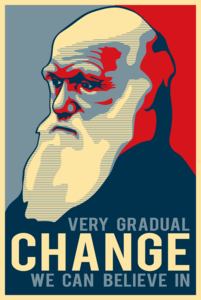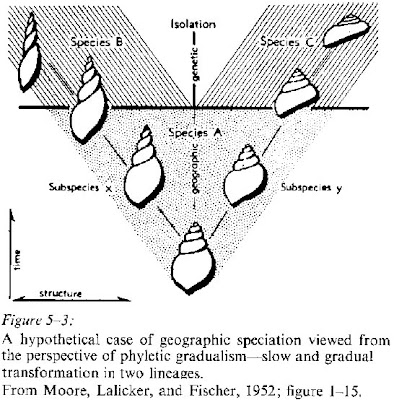 Chris Mooney warns us that science journalism is in trouble. He notes that many newspapers are firing their science writers and he warns of the dangers [The Death and Strangulation of Science Journalism].
Chris Mooney warns us that science journalism is in trouble. He notes that many newspapers are firing their science writers and he warns of the dangers [The Death and Strangulation of Science Journalism].What's disturbing, though, is to see a meta-discussion of the "trouble" with the practitioners of science journalism without any discussion of the real "trouble": the economic realities that are killing them off, one by one.I responded by saying ....
Memo to scientists: If you don't like science journalists, you're going to like even less what you get once they're gone.
Not to worry. We'll figure out some way to frame it so that it sounds like a good thing!Now Chris has started a separate thread in order to disucuss this point [Science Journalism: When Things Get Rough, You Find Out Who Your Real Friends Are].
:-)
Seriously, most of what passes for science journalism is so bad we will be better of without it.
Maybe the general public would have been more interested in science if science journalists hadn't been writing so much hype about "breakthroughs" for the past twenty years. Maybe the public would have been more interested in science if so-called "science" journalists hadn't been confused about the difference between science and technology.
Science isn't about what the latest discoveries can do to make your life better. It's about learning how the natural world actually works. It's all about knowledge and not application or politics.
Science journalists have let us down. I say good riddance.
My post last week about the death knell of science journalism prompted some incredible responses. Here's Larry Moran, putting it more bluntly than I expected, and enunciating an opinion we'd better hope does not prevail:Well Chris, I hate to tell you this but there are plenty of scientists who share my opinion, even though they may not have put it so bluntly.
...
Breathtaking, huh? I seriously hope opinions like this are not very widespread in the scientific community.
And you know what, Chris? You and Matt are partly to blame for this sad state of affairs. I know you don't want to talk about framing because you have "moved on," but your criticism of scientists didn't do a lot to inspire our confidence in science journalism.
But let's move on and look at what you have to say today.
Honestly, based upon the foregoing, I have to question whether Larry Moran knows what a science journalist is--or at least, whether we're talking about the same thing. For it seems to me that virtually everything he's complaining about, a real science journalist would complain about as well.I don't believe you.
Take the media slights against science described above--the hyping of "breakthrough" findings, the confusion of science and technology, and the swapping of serious science coverage for "feel good" or "news you can use" infotainment fare. Although you will certainly find exceptions, in general these aren't the fault of dyed-in-the-wool science journalists, of the sort that proudly claim membership in the National Association of Science Writers (as I do). In fact, you can bet that within their respective media organizations--when they still were working within them; most of NASW today is freelance--science journalists have fought against many such calls over the years.
And you can also bet that they frequently lost out in those internal battles.
But, for the sake of argument, let's assume that you are correct. Let's assume that most science journalists know full well that science doesn't produce weekly breakthroughs (all evidence to the contrary). Let's assume that most science journalists know the difference between science and technology. Let's assume that what they really want to do is write about how science leads to advances in understanding of the natural world instead of sensationalizing the subject by writing about, .... oh, let's say, "hurricanes, politics, and the battle over global warming."
Even if everything you say is true, the bottom line is that science journalists failed to make their case and were "forced" to do the bidding of senior editors—or whoever it is you blame.
If that's case, why should we support the status quo and stand up for the people who have (according to you) failed to deliver the goods?
The point is that nobody loves science more than science journalists--and nobody more devoutly wishes to see it covered accurately and widely, so that the "general public" thereby benefits, and comes to appreciate science more thoroughly. So how is it that now, a scientist like Larry Moran won't stand up for these science evangelists in the media, and blames them for a host of failings that, in truth, they themselves most assuredly abhor?I gave you my answer. It's because I don't believe you. Is George Johnson one of your examples? How about Graham Lawton?
Now don't get me wrong. I'm not saying that every science journalist is doing a bad job. I've tried hard to pick out the good ones and give them the credit they deserve. What I'm saying is that, from my perspective, the majority of science journalists do not behave in the way you describe. It's all too easy to find articles that get the science wrong and articles that are more hype than reality.
Face the facts Chris, science journalists have not been very successful at finding allies among scientists. There's a very good reason for that. Try reading about the kerfluffle over the New Scientist cover to get a feeling for the problem.
Here's another exercise for anyone who cares about the quality of science journalism, as I do. Read the press releases on ScienceDaily. You won't find very many scientists who are impressed with that kind of science journalism.
























